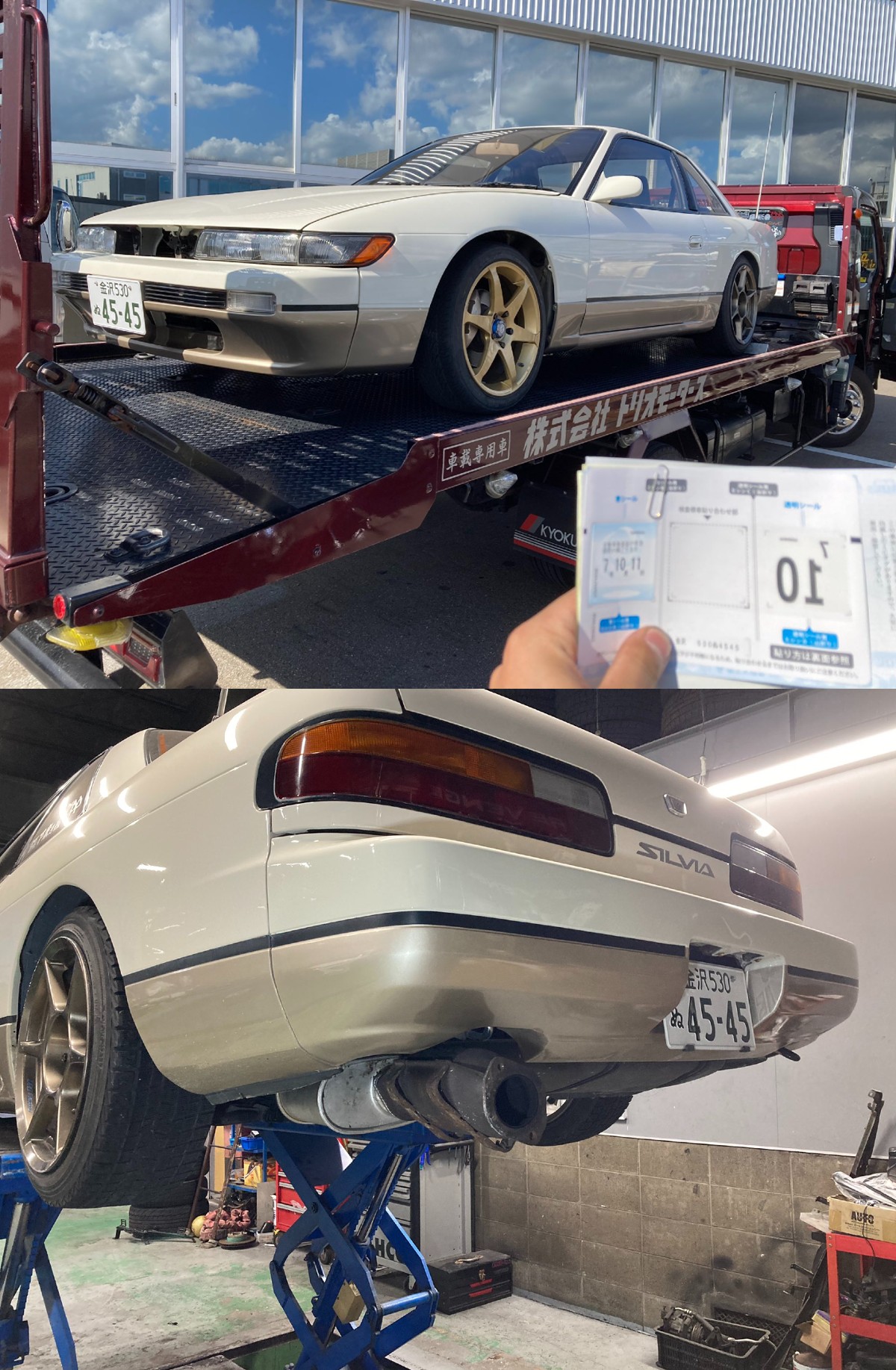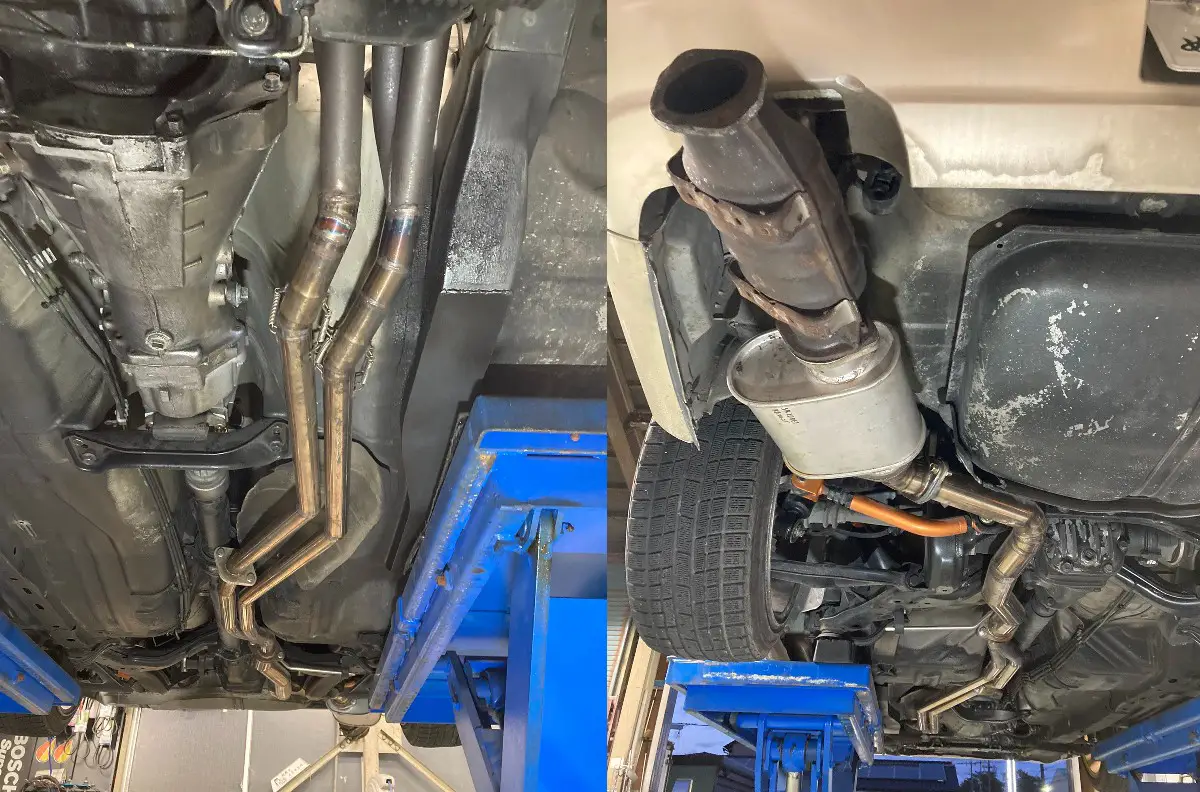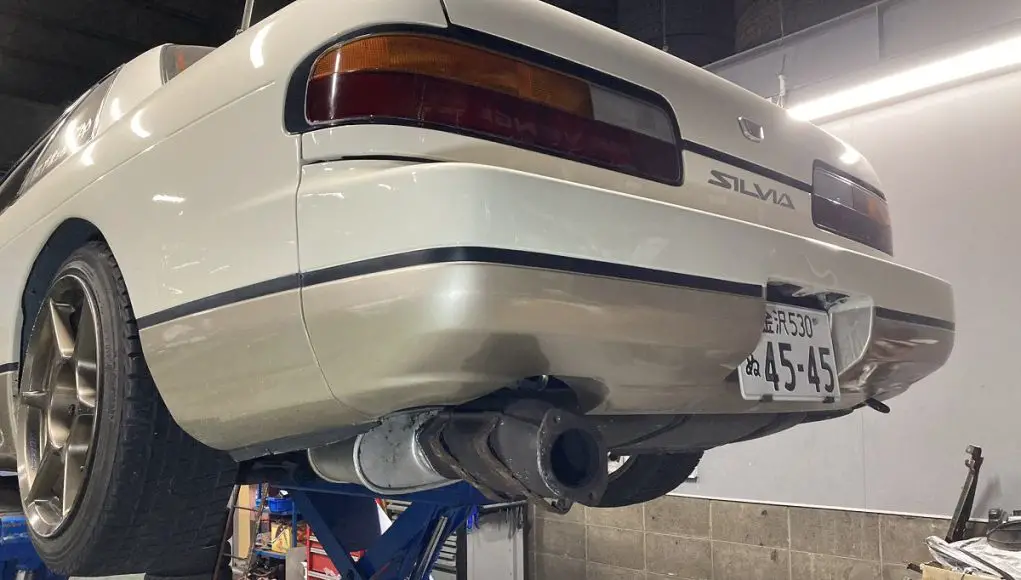Apparently there’s no rule in the Shaken handbook that says you can’t put a cat at the end of your exhaust.
Nissan Silvia (240) owner and Japan resident Bayashiko, who goes by @BY45_kawaii_bot on Twitter ,recently shared the 4D chess move he pulled off to get his ’90 era Nissan to pass his yearly inspection.
To make sure his car passed the emissions portion of the test, he welded a catalytic converter to the end of his exhaust…and passed!
Check out his post below.
車検1発合格嬉しすぎ????????
— ばやしこ???? (@BY45_kawaii_bot) October 12, 2023
ふざけたマフラーだけめっちゃ突っ込まれたけどw
触媒を後ろにつけたらダメって決まりはないからね???? pic.twitter.com/nbp4NliFnK


“I’m so happy that I passed the vehicle inspection on the first try,” his caption reads.
“I got hit hard with my silly muffler. There’s no rule that says you can’t put a catalyst in the back.”
Cars in Japan are subject to a comprehensive vehicle inspection called the Japan Compulsory Insurance Inspection, better known as the Shaken, every two years.
Cars older than 10 years, like Bayashiko’s 240, have to pass this stringent test every year.
Costing between $800-$2,000 depending on the car’s condition, weight, and engine size, it’s a mandatory test that all car owners in Japan dread and is why owning older cars gets cost prohibitive.
Among areas tested include the inspecting the exterior for major damage, making sure the suspension, brakes, and wheel alignment are all in good, working order, and, of course, emissions.
The emissions portion of the test is quite through making sure any emissions related parts like the catalytic converter, entire EVAP system, EGR, charcoal canister, and air injection system are all operational and within spec.
The effectiveness of emissions are further tested by making sure, like a lot of emissions testing in the United States, that an acceptable amount of pollutants is making its way out of the exhaust.
I find it hard to believe quite honestly but, as OP mentions, there’s nothing in the JCI handbook that says you can’t have the catalytic converter at the end of your exhaust, I guess.
This would absolutely not fly in California as any emissions related components must be OEM or California Air Resource Board approved and must be in an untampered state.
Then again, California has some of the strictest emissions standards in the world and this level of tomfoolery is actually a legal loophole in Japan.
Japan, after all, has an actual and usable transportation system, with many of its cities ranked the cleanest in the world as far as pollutants are concerned.
Perhaps Bayashiko’s exploited a loophole that shouldn’t exist and may cause the powers that be that oversee the JCI to close this one before other car owners take advantage.
If this is true, it’s fair game in my book.
Sure, he’s going to unbolt that sucker once he gets home, but, in the grand scheme of things vis a vis emissions, Japan has bigger fish to fry (literally, you know, because tuna, and figuratively.)




